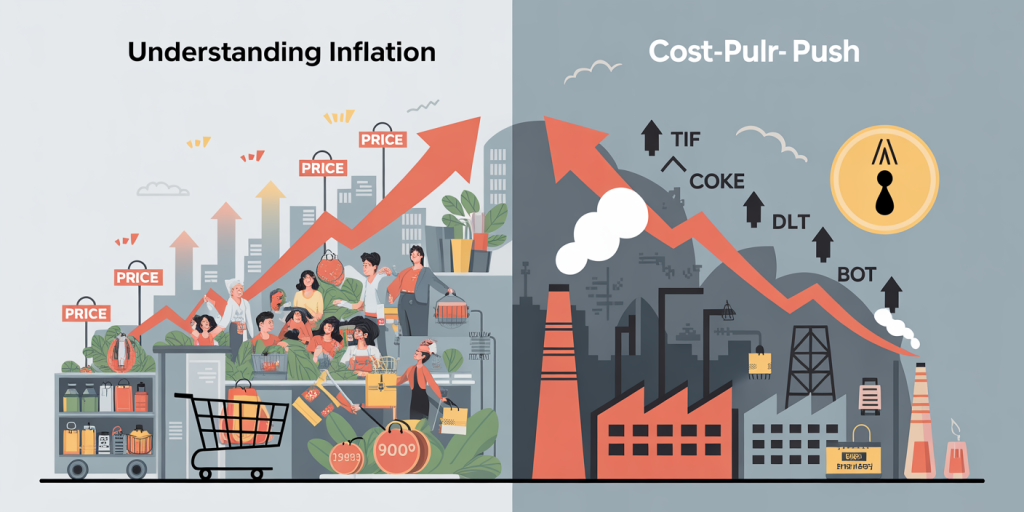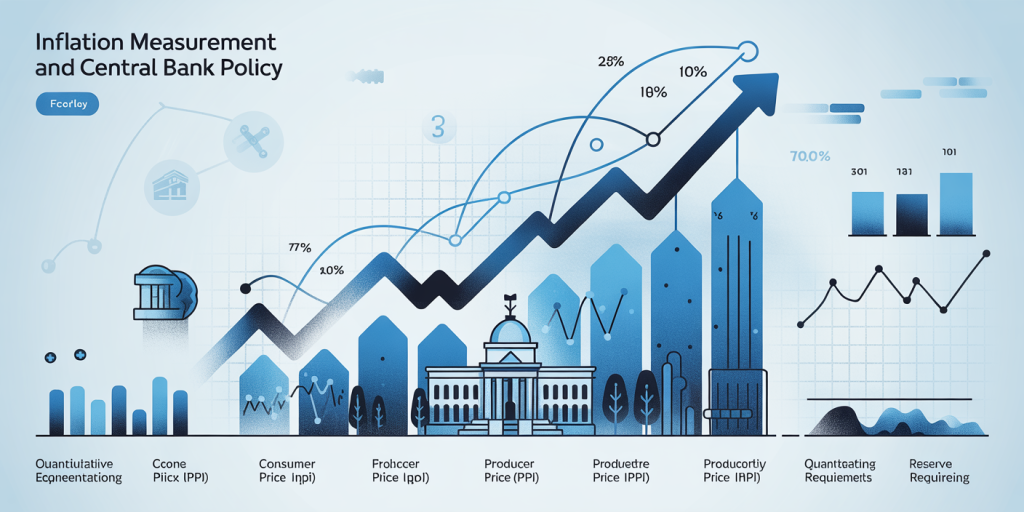Inflation is a term frequently encountered in discussions about economics, personal finance, and government policy. Yet, despite its widespread use, many people still find it confusing or intimidating. Understanding inflation is essential not only for making informed financial decisions but also for grasping how an economy functions. This article breaks down inflation into simple concepts, practical examples, and relevant statistics to provide a clear and comprehensive understanding.
What Is Inflation and Why Does It Matter?
Inflation measures how much the overall price level of goods and services in an economy increases over time. Simply put, it means that the money you have today will buy less in the future because prices are rising. For example, if the inflation rate is 3% per year, a loaf of bread that costs $1 now will cost $1.03 a year later.
One major reason inflation matters is its impact on purchasing power—the real value of money. When inflation is moderate and predictable, it encourages spending and investment, as consumers expect prices to rise moderately. However, if inflation becomes very high or unstable, it can erode savings, distort spending, and create economic uncertainty.
Types of Inflation: Demand-Pull vs. Cost-Push
There are two primary types of inflation, each with different causes and effects: demand-pull inflation and cost-push inflation.
Demand-pull inflation happens when demand for goods and services exceeds supply. Imagine a booming economy where consumers have more money to spend, resulting in higher demand for products. Businesses respond by raising prices because the demand outstrips their capacity to produce. A real-world example is the post-World War II period in the United States when pent-up consumer demand led to rapid price increases.
Cost-push inflation, on the other hand, occurs when the costs of production rise, leading producers to increase prices to maintain profitability. For example, a sudden increase in oil prices raises transportation and manufacturing costs, pushing the overall price level higher. The 1970s oil shocks offer a classic case, when energy price spikes contributed to high inflation globally.

Table 1: Comparison of Demand-Pull and Cost-Push Inflation
| Aspect | Demand-Pull Inflation | Cost-Push Inflation |
|---|---|---|
| Cause | Excess demand over supply | Rising production costs |
| Typical Example | Economic booms | Oil price shocks, wage hikes |
| Effect on Economy | Can lead to overheating and asset bubbles | Can cause stagnation and reduced output |
| Policy Response | Tightening monetary policy | Combining cost-cutting and monetary tightening |
How Inflation Is Measured
Governments and economists use various indices to track inflation, with the Consumer Price Index (CPI) being the most common. The CPI measures the average change over time in the prices paid by consumers for a basket of goods and services, including food, housing, transportation, and healthcare. For instance, in 2023, the U.S. Bureau of Labor Statistics reported approximately a 4.7% annual increase in the CPI, highlighting higher consumer living costs.

Another important measurement is the Producer Price Index (PPI), which tracks price changes from the seller’s perspective before goods reach the market. PPI can often predict future CPI trends, as increases in production costs translate into higher consumer prices.
Central banks, such as the Federal Reserve in the U.S. or the European Central Bank, monitor these indices closely. They also consider core inflation, which excludes volatile items like food and energy prices, to assess underlying inflation trends.
Effects of Inflation on Individuals and Businesses
Inflation affects different groups in distinct ways. For consumers, moderate inflation usually leads to rising prices for daily goods and services, reducing their real income if wages do not keep up. For example, in countries with 5% annual inflation, a fixed income loses purchasing power unless adjustments are made.
On the business side, inflation can increase input costs and lead to pricing uncertainty. Firms with flexible pricing can pass on costs to consumers, but those in competitive markets might absorb higher costs, squeezing profit margins. Additionally, inflation influences interest rates: lenders demand higher rates to compensate for the diminished value of money repaid in the future.
A practical case is the hyperinflation experienced by Zimbabwe in the late 2000s, where prices doubled almost daily. Ordinary citizens faced extreme hardships as savings quickly became worthless, and businesses struggled to set stable prices.
Inflation vs. Deflation: The Economic Balancing Act
While inflation captures rising prices, deflation is the opposite scenario—falling price levels over time. Both extremes can have serious economic consequences.
Inflation, especially when controlled around a target like 2%, is generally seen as a sign of a healthy, growing economy. Central banks often aim for low and stable inflation to avoid erratic swings in price levels. However, runaway inflation, or hyperinflation, can destabilize economies by undermining confidence in currency and disrupting business planning.
Deflation, though less common in modern economies, poses risks such as reduced consumer spending, as people delay purchases expecting future lower prices. This can lead to economic contraction and higher unemployment. Japan’s experience in the 1990s, with prolonged deflation and slow growth, illustrates this challenge.
| Economic Condition | Inflation Characteristics | Deflation Characteristics |
|---|---|---|
| Price Movement | Rising general price levels | Falling general price levels |
| Consumer Behavior | Encourages spending before prices rise | Encourages postponement of purchases |
| Economic Growth | Typically supports moderate growth | Can trigger recessions and economic stagnation |
| Policy Response | Interest rate increases, tighter money supply | Interest rate cuts, quantitative easing |
Strategies to Manage Inflation: Government and Central Bank Roles

Managing inflation is a crucial task for policymakers. Central banks use monetary policy tools to influence inflation levels, primarily by adjusting interest rates and controlling money supply.
When inflation rises above targets, central banks usually raise interest rates, making borrowing more expensive. This action tends to reduce consumer spending and business investment, cooling demand and easing inflationary pressures. For example, in 2022-2023, several central banks, including the U.S. Federal Reserve, increased interest rates in efforts to combat rising inflation caused by supply chain disruptions and pandemic-related stimulus.
Fiscal policy, managed by governments, also affects inflation indirectly through taxation and public spending. Excessive government spending can fuel demand-pull inflation, while restrictive policies may dampen the economy.
On an individual level, people can protect themselves from inflation by investing in assets that tend to appreciate in value or generate income that rises with inflation, such as real estate, stocks, or inflation-protected bonds.
Looking Ahead: The Future of Inflation in a Changing World
Inflation dynamics are evolving due to globalization, technological innovation, and shifting demographics. Global supply chains, which once helped keep consumer prices low by lowering production costs, have faced disruptions recently, contributing to higher inflation in many countries. For instance, the COVID-19 pandemic and geopolitical tensions, like the 2022 Russia-Ukraine conflict, caused significant energy and commodity price shocks.
Technological advances, on the other hand, often create downward pressure on prices by improving productivity and reducing costs. However, automation and artificial intelligence may shift labor market dynamics over time, potentially influencing wage inflation.
Climate change and sustainability efforts introduce new variables. Transitioning to green energy sources requires significant investment, which could increase production costs temporarily, potentially creating cost-push inflationary pressures in certain sectors.
Central banks continue to adapt their frameworks, focusing on flexible average inflation targets rather than fixed rates, to maintain price stability amid these uncertainties. As consumers, businesses, and policymakers navigate this complex landscape, understanding inflation remains critical for making sound economic choices.
This comprehensive overview demystifies inflation by breaking down its causes, measurements, impacts, management tools, and future trends. Recognizing inflation’s role helps individuals and institutions better prepare financially and contributes to informed public debate about economic policies shaping our world.